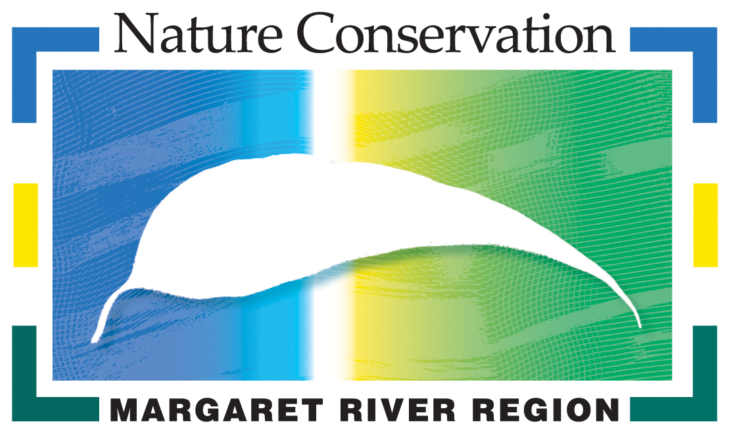Saving a critically endangered frog, reducing the impacts of pets and replanting habitat for native bandicoots are just a few of the incredible ways Margaret River region students are connecting, respecting and acting for the environment.
And their hard work was on display today at Nature Conservation Margaret River Region’s annual Our Patch presentation, where more than 240 students presented an inspiring range of projects to a packed audience at Nala Bardip Mia (Margaret River HEART) following a Welcome to Country from cultural custodian Zac Webb.
The Year 6 students from six schools across the region have spent a year investigating the health of their local catchment or wetland, assessing threats and devising innovative solutions to care for their patch and pass the learning onto the community.
“That was amazing! What an incredible effort by the students,” said Shire of Augusta-Margaret River president Paula Cristoffanini. Councillor Tracey Muir also attended and told the students: “I’m so amazed and so proud of all of you. It’s an inspiration. You have shown us the way forward.” Among the crowd was Nature Conservation ambassador and renowned local artist Leon Pericles who labelled the kids’ work “fantastic” and said their knowledge and commitment to the environment gave him hope for the future.
Margaret River Independent School looked at threats facing the tiny and critically endangered white-bellied frog, which is only found in a pocket of habitat bordering Calgardup Brook near the school at Forest Grove. They met with local experts and Perth Zoo staff who run a captive breeding program, and then teamed up with a local landowner to plant more than 300 rushes, sedges and other wetland natives specifically needed for the frogs’ habitat. They also designed and printed T-shirts for sale to raise funds for the frogs’ conservation (see www.mris.wa.edu.au to buy one).
Margaret River Montessori School students used motion-sensor cameras to observe secretive wildlife like quenda or native bandicoot in their local wetland feeding Yalgardup Brook. They were inspired to improve habitat and create a refuge from predators like foxes, so they cleared weeds, added mulch and planted hundreds of natives to create quenda corridors. They even wrote a moving poem to share the message and inspire others to help green the region!
Examining the Wooditjup Bilya catchment, Margaret River Primary School students found pet dogs and cats were having a big impact on wildlife (domestic cats can kill up to 30 native animals a day and roam up to 5km). They launched a campaign with information cards, a QR code and accompanying TV show urging all pet owners to make a “Pet Pledge” to keep cats inside or in a secure “catio” or cat patio, and keep dogs from roaming, walk them on a lead, pick up dog poo and keep out of national parks to give native animals a helping hand. Teacher Ellie Smilovitis said her students were “immersed in real-life learning as they studied the health of the Margaret River and came up with possible solutions”. “This gives the children a real sense of ownership of environmental issues that impact their community,” she said.
Rapids Landing Primary School students put their waterway, Darch Brook, under the microscope before a visit from Owl Friendly Margaret River’s Dr. Boyd Wykes inspired the kids to focus on owls and how rodenticides are decimating their numbers. They got creative and made an entertaining puppet show about rodenticides; then they hit the streets and launched a community-wide petition urging local outlets to install better signage, provide better information and only sell owl-friendly rat baits. Year 6 student Erica Cooper said it was “devastating to know that our native wildlife is dying because of second-generation anticoagulant rodenticides”, which kill mice and rats but also poison animals that prey on them. Fellow student Cinta Frood said most local residents weren’t aware of “the dire situation our native owls are in” but were keen to sign the petition and do more. Teacher Joe Hodgson said it was inspiring to see her students take to the streets and gather so much community support.
Meanwhile, Cowaramup Primary School students learned about endangered Carnaby’s, Baudin’s and Forest Red-tailed cockatoos, which are facing extinction. And they helped conservation efforts by researching, designing, building, installing and monitoring bird nest boxes, as well as writing letters to the WA Premier and planning a “Cookies for Cockies” fundraising bake sale, among many other ideas.
Rounding out the impressive Our Patch projects was Augusta Primary School, whose students rallied to the aid of Western Ringtail possums. They learned about habitat, built and installed possum dreys, formed a “Weed Busters” team (complete with their own theme song), planted natives, and helped educate the community about keeping pets inside at night.
Our Patch officer Lauren Scanlon said: “Wow! What an incredible morning full of inspiring examples of young people making a real difference in our region. We’re just blown away by the inspiration, ideas and commitment of the children who have gone to extraordinary lengths to protect country, to share their learning, and to inspire the community to act. A huge thanks to everyone who came along in support of young people caring for country and hearing their vision for a thriving Margaret River region.”
Our Patch is generously funded by Lions Club of Cowaramup, Shire of Augusta Margaret River, Margaret River Rotary, the Paskeville Foundation, Margaret River Brewhouse and local schools.
